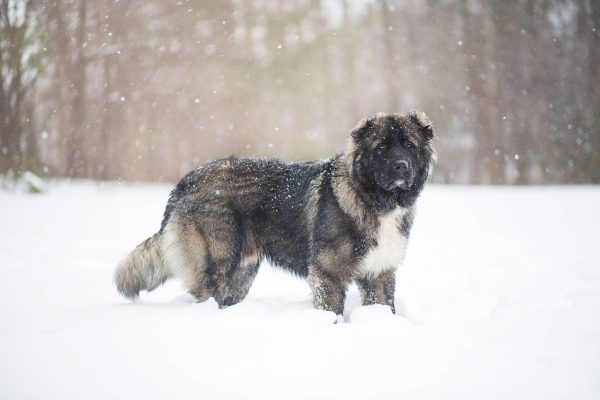
Georgians.
Lovely people, but with a nod of affection to our friends in the southern United States, the Georgians in this post are Russian, and specifically, an ethnic group native to the South Caucasus. A subgroup of Georgians are the Tushetians, a people whose culture and traditions have been shaped by its extreme isolation and ancient. The countless stone shrines they left behind (known as khati) are famous for the carefully laid stone piles adorned with animal skulls and long, curled, bovine horns. The people are also known for the dog they cultivated, one of the oldest living Molossers, and a breed many consider to be the “real” Caucasian Ovcharka because it may be the foundation dog – the Georgian Caucasian Sheepdog (aka Georgian shepherd or Tushetian Nagazi). It should be said, however, that the AKC says the Georgian Caucasian Sheepdog is another name for Caucasian Ovcharka, and other sources hint that it comes down to semantics: The name “Caucasian Shepherd” is used by Europeans while “Caucasian Ovcharka” is used by Russians, and in other countries, the breed is referred to as the “Caucasian Mountain Dog.”
Further confusion is added when one considers regional variances of the breed. Dogs in Azerbaijan are tall and lightly-built, the ones in Dagestan smaller and squarer, and dogs in what is now Chechnya are quite large and heavy.
Those who believe there is a difference point out that compared to a Caucasian Ovcharka, the Georgian Caucasian Sheepdog doesn’t seem all that impressive; it is smaller, leaner, and lighter, some say because of poor nutrition over centuries, but others say the breed was shaped by an environment which would not have favored a heavier, less athletic dog ill suited for mountain terrain and inhospitable climate. In short, it developed naturally.
There are as many versions of the breed’s history as there are those providing it, much of the confusion due to the Soviets who were infamous for rewriting the histories of regions they controlled to be pro-Russian. However one interprets its past, what is immutable is that this is an intuitive and authoritative dog, loyal to its people, but aloof with strangers,
